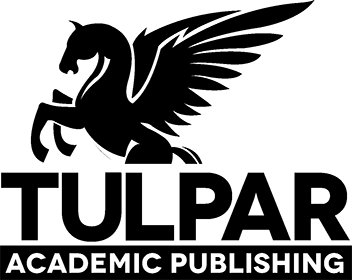Photocatalytic activation of fibrous lightweight polymer concrete surfaces under artificial light source
DOI: https://doi.org/10.20528/cjcrl.2025.01.002
View Counter: Abstract | 338 times | ‒ Full Article | 195 times |
Full Text:
PDFAbstract
In general, surface contamination of building materials is caused by pollution, which can be divided into human-made and natural sources. Building materials whose surfaces are exposed to pollutants from these sources for a long time show chemical and physical degradation and lose their function over time and their service life is shortened. Due to photocatalytic feature provided to the material surfaces, organic pollutants on the surface are degraded as a result of oxidation and reduction reactions under the influence of light. In this study, the self-cleaning performance was measured on the surfaces of fibrous lightweight polymer concretes with titanium dioxide (TiO2) reinforcement incorporated into the structure. Perlite-based concrete specimens with TiO2/resin ratios of 0%, 3%, 6% and 9% and fiber/resin ratios of 0%, 0.5% and 1% were prepared. When the results of the self-cleaning test with Rhodamine B dye were examined, the samples with a TiO2/resin ratio of 9% had the highest degradation percentages of about 67%. This study shows that photocatalytic properties can be imparted to lightweight polymer concretes with different structures from conventional concrete by TiO2 reinforcement.
Keywords
References
Bedi R, Chandra R, Singh SP (2013). Mechanical properties of polymer concrete. Journal of Composites, 2013(8), 948745.
Beeldens A (2006). An environmental friendly solution for air purification and self-cleaning effect: the application of TiO2 as photocatalyst in concrete. Proceedings of Transport Research Arena Europe–TRA, Göteborg, Sweden, 1-9.
Cakir F (2022). Effect of curing time on polymer concrete strength. Challenge Journal of Concrete Research Letters, 13(2), 54-61.
Carp O, Huisman CL, Reller A (2004). Photoinduced reactivity of titanium dioxide. Progress in Solid State Chemistry, 32, 33-177.
Cedillo-González EI, Barbieri V, Falcaro P, Torres-Martínez LM, Juárez-Ramírez I, Villanova L, Siligardi C (2018). Influence of domestic and environmental weathering in the self-cleaning performance and durability of TiO2 photocatalytic coatings. Building and Environment, 132, 96-103.
Cojocaru A, Isopescu DN, Maxineasa SG (2023). Perlite concrete: a review. IOP Conference Series: Materials Science and Engineering, 1283(1), 012003.
Ćurčić AA (2019). Photocatalytic self–cleaning facades in achitectural design. Facta Universitatis, Series: Architecture and Civil Engineering, 16(3), 425-436.
Dikkar H, Kapre V, Diwan A, Sekar SK (2021). Titanium dioxide as a photocatalyst to create self-cleaning concrete. Materials Today: Proceedings, 45, 4058-4062.
Folli A, Pade C, Hansen TB, De Marco T, Macphee DE (2012). TiO2 photocatalysis in cementitious systems: Insights into self-cleaning and depollution chemistry. Cement and Concrete Research, 42(3), 539-548.
Guo Q, Zhou C, Ma Z, Yang X (2019). Fundamentals of TiO2 photocatalysis: concepts, mechanisms, and challenges. Advanced Materials, 31(50), 1901997.
Güler E (2024). The effect of dust sugar filter waste on soil dynamic parameters and liquefaction. Journal of Material Cycles and Waste Management, 26(4), 1-19.
Haider AJ, Jameel ZN, Al-Hussaini IH (2019). Review on: Titanium dioxide applications. Energy Procedia, 157, 17-29.
Hashimoto K, Irie H, Fujishima A (2005). TiO2 photocatalysis: a historical overview and future prospects. Japanese Journal of Applied Physics, 44(12R), 8269.
Khan SA, Hussain F, Khushnood RA, Amjad H, Ahmad F (2024). Feasibility study of expanded clay aggregate lightweight concrete for nonstructural applications. Advances in Civil Engineering, 2024(1), 8263261.
Kiruthika C, Prabha SL, Neelamegam M (2021). Different aspects of polyester polymer concrete for sustainable construction. Materials Today: Proceedings, 43, 1622-1625.
Nodehi M (2022). Epoxy, polyester and vinyl ester based polymer concrete: a review. Innovative Infrastructure Solutions, 7(1), 64.
Sarde B, Patil YD (2019). Recent research status on polymer composite used in concrete-an overview. Materials Today: Proceedings, 18, 3780-3790.
Rebeiz KS, Serhal SP, Craft AP (2004). Properties of polymer concrete using fly ash. Journal of Materials in Civil Engineering, 16(1), 15-19.
Seymour H (2019). The Multinational Construction Industry. Taylor & Francis, Routledge.
Sui Pheng L, Shing Hou L, Pheng LS, Hou LS (2019). The economy and the construction industry: A study at the firm level. In: Construction Quality and the Economy, Springer Nature, 21-54.
Şengel H, Kınık K, Erol H, Canbaz M (2022). Effect of waste steel tire wired concrete on the mechanical behavior under impact loading. Challenge Journal of Structural Mechanics, 8(4), 150-158.
Thienel KC, Haller T, Beuntner N (2020). Lightweight concrete‒From basics to innovations. Materials, 13(5), 1120.
Topçu İB, Işıkdağ B (2008). Effect of expanded perlite aggregate on the properties of lightweight concrete. Journal of Materials Processing Technology, 204(1-3), 34-38.
Ulu A (2024). Effect of resin amount on the damping properties of polymer concrete. Challenge Journal of Concrete Research Letters, 15(2), 47-55.
Ünal S, Canbaz M (2022). Effect of industrial wastes on self-cleaning properties of concrete containing anatase-TiO2. Revista de la Construcción, 21(3), 493-505.
Ünal S, Canbaz M (2024). Mechanical properties of lightweight photocatalytic marbelite. Challenge Journal of Structural Mechanics, 10(4), 159-165.
Zailan SN, Mahmed N, Abdullah MMAB, Sandu AV, Shahedan NF (2017). Review on characterization and mechanical performance of self-cleaning concrete. MATEC Web of Conferences, 97, 01022.
Zhang S, Guo Y (2021). Measurement of gem colour using a computer vision system: A case study with jadeite-jade. Minerals, 11(8), 791.
Zhao A, Yang J, Yang EH (2015). Self-cleaning engineered cementitious composites. Cement and Concrete Composites, 64, 74-83.
Refbacks
- There are currently no refbacks.









